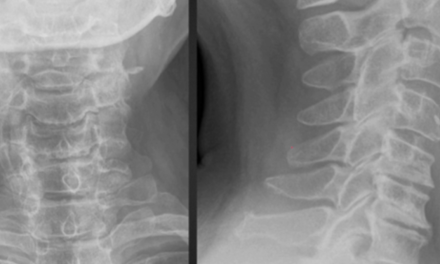
Please Describe Your Health Problem

by: Mark Terry, DC
This is the first statement/question on my patient intake form. I have used it for more years than I want to admit. And yet, I continue to be astounded by the response I receive from it from patients. I would estimate that at least 40% of the time their answer is either none or it is left blank. When I say to them, ‘so, you don’t have a thing wrong with you?
‘Whatta you mean?’ is their response. ‘Well, it says here you don’t have a health problem’. Then they tell me what their complaints are and invariably, it has something to do with the musculoskeletal system as the primary but with further questioning they provide several other complaints, which are easily detected in the history. At that point, I take them through the consultation process. But what this question and their response really illustrate to us is that a huge percentage of the population doesn’t think that their backache, neckache, headache, shoulder, arm, knee or leg pain is a HEALTH problem. It is a nuisance, annoyance, hindrance or inconvenience. Diabetes is a health problem, Hypertension is a health problem, and Cholesterol is a health problem. Their aspirin deficiency is a health problem. ‘How long have you been taking that aspirin’? ‘A long time. My doctor said to.’ ‘Does it help’? ‘Not yet’. So it goes. A label, a name, or a disease treated with their prescription is a health problem to many people. And nothing else qualifies or so they think. Side effects from their Statin drugs could cause their symptoms or their ‘Purple Pill’, Nexium, for their ‘disease’ called GERD. The list is endless.
Just this past week I asked a patient why was she taking Zocor. She had all the hallmark signs of statin side effects. She said she had cholesterol. I guess nowadays it’s bad to have any of that stuff. She said the doctor told her she was borderline. Her initial serum total cholesterol was 135 and LDL was below 80 without ever having taken the scrip. Great marketing for him. Lousy result for her. Marketing chiropractic for health problems to a certain percentage of the population remains a daunting task. Maybe we should just tell them they’re borderline for a spinal blowup! After almost 30 years of practice, I find all of this both amusing and sad. After seeing the same things happen to people over and over and over again the only thing that changes is the cast of characters.
Most symptoms and complaints that patients have could fit in these 4 broad categories:
- Respiration
- Circulation
- Digestion
- Motion
The causes of their complaints could be multifactorial and usually are but their complaints would probably still fit in the above groups. Energy is reduced, attitudes change, activities are affected, their life is altered and they don’t like it. That’s why they’re in your office. Now it is your time to shine. You can properly examine the motor, sensory, and autonomic systems and show the patient how their health problem is intertwined with these systems. You can show them where their muscle paresis is, where their sensory abnormalities exist, where their joint restrictions are, and with a thorough cranial nerve exam, you can show them how the autonomic nervous system can be responsible for many seemingly unrelated complaints. Which brings us to the subject of RECEPTORS. Human existence and function are dependent upon receptor activity. We have them in skin, muscles, joints, blood vessels, organs, and glands. They’re all over the place. In order to fire they need to be stimulated. The ONLY constant stimulation from the environment is gravity. Everything else is non-constant. These receptors have the potential for activity called Receptor Potentials. Receptor potentials are Graded and Non-propagated. Graded means that some stimulation to the system may not reach threshold, may not reach conscious perception, but their function is ready to be used. In contrast, there are Action Potentials.
Action potentials are Propagated and Non-graded. Propagated means some kind of stimulus is needed to reach excitation threshold so the neuron can fire in an all or none response which is complete. It is not graded. It fires completely. Receptors have the potential to do this but it doesn’t mean they actually do it. If enough receptors reach threshold then an action potential occurs and the neuron fires. Big deal, right? It is a big deal. Because if you as a clinician don’t look for whether the neuron fires or is able to fire your efforts will be wasted and the patient won’t receive any benefit. For discussion purposes and in the absence of a surgical emergency here’s an example. Your patient has to be helped into your office, can’t lift the right leg to ambulate and has some antalgia. It’s obvious a certain population of neurons is inhibited somewhere in the system. If that patient is asked to excite slow stretch receptors such as muscle spindles by making a fist on the same side of the weakness there might be a change in your test.
Since slow stretch receptors are processed centrally in the cerebellum this tells you that the receptors which fire up to the cerebellum are not doing their job or the cerebellum has not been brought to the threshold for some time which allowed the failure to occur in the first place. Opening a door or putting on your shoes does not cause a back problem. The failure of the back in this instance is a result of a loss of afferentation to central centers, specifically the fastigial nucleus of the cerebellum from the spindle cells of the intravertebral muscles via the dorsal and ventral spino-cerebellar pathways. Another cause could be contralateral thalamic inhibition with cortical involvement. I’ll leave that for another time. The strongest most differentially diagnostic method available in neurophysiology is stimulation of joint and muscle mechanoreceptors. We call it an adjustment. But call it what you want because about 80% of the brain’s electrical activity is due to feedback from these structures. Maybe that’s why when a patient starts a treatment program with us other ‘stuff’ improves also.
Having trouble getting your cervical whiplash patients to hold their adjustments? Look to the eyes. See if certain positions of gaze cause an increase in symptoms or motor power loss. Remember LR6 and SO4?? Lateral rectus is fed by cranial nerve VI- Abducens, Superior oblique by IV- Trochlear, all the others by III- Oculomotor. III and IV are from the Mesencephalon, VI is from the Pons. The roof of the Mesencephalon is called the Tectum. It gives rise to the Tectospinal tract, which sends its efferents to the first 4 cervical segments.
Exercising the appropriate paretic muscles with and without light stimulation and using the accommodation reflex via near and far vision will fire the Edinger-Westphal nucleus in the Mesencephalon which will fire the appropriate structural muscles of these cervical segments. In addition, if the Pons is involved via the lateral rectus the patient can be instructed to gargle to fire off not only the Pons but also the Ponto-medullary junction which is where IX and X originate. This type of activity re-enforces the activity of the Pons. I have been doing this for years. Just using simple neurophysiology, no re-invention of the wheel or double-blind studies required. No need to call the insurance company to see what the med pay limits are. Believe it, the adjusters know who is calling for this information. Want to get on their Red Flag list, call them. Want to take care of the patient, pay attention to the receptors and their fatigue ability ratios. It’s logical and simple. Maybe too simple. Maybe that’s why it’s not done more often.
How about the gassy, bloated, belching patient? Go back to receptors. Parietal cells release HCl. Tums, Prilosec or Nexium may be in the history or on the list. Oops, remove the effects of the parietal cell and shut the patient up! Increasing the pH in the stomach will do just that. Absorption of large molecular weight minerals such as Calcium and maybe Magnesium might then be reduced. Proper stimulation using nutritional supplementation to facilitate receptors so the system can digest the food may be all the patient would require. Receptors can be easily stimulated by both chemical and physical means. Look to the activity of the brainstem, specifically the ponto-medullary junction. Your cranial nerve exam will give you this information. Muscle and nerve tissue need these minerals. If nerves don’t fire muscles don’t work, then joints don’t move, then central centers don’t receive afferentation so no direction for the system. If the receptors don’t fire the system can’t work. The result may be incomplete digestion with its myriad of symptoms or failure of the musculoskeletal system with no physical insult. ‘I don’t know what happened doc. Maybe I just slept wrong’. Showing people the reason for their malady can be very rewarding. Who’s got a better job than this? Digestive abnormalities can cause a wide range of musculoskeletal complaints due to the brainstem’s effect of being a relay station for descending motor controls from the cortex. Walk down the aisle of your pharmacy or Wal-Mart. There are shelves and shelves of remedies (??) for all kinds of these autonomic concomitants. Ask your Wal-Mart associate what’s good for gas or what’s a good multiple to take. Record the conversation. Have some fun in life. Watch what prepared foods the obese folks buy at the Super Centers, get the names of those companies that produce these products, and invest in them. Your retirement account will go up exponentially doing this ‘cause one thing those folks will do is eat. Instead of getting upset at Wal-Mart for dropping chiropractic coverage figure out a way to make the lemonade. Do the same thing for your patients by being very observant of the function of their systems. And then use your knowledge of neurophysiology, nutrition, biomechanics, and human nature for their well being.
Does your patient have trouble taking a deep breath or is their breathing hindered in any way? The major impediment to breathing is faulty chest wall mechanics. Not necessarily emphysema or cancer. Your costal muscles and costal-sternal and costal-vertebral articulations are supposed to move 24 hours a day. Ideal chest expansion upon maximal inspiration is about 4 inches. Good luck finding that in our society! Without proper chest wall movement, oxygen availability can get decreased. About 60% of the oxygen going to the brain is inhaled by the cerebellum due to its high metabolic activity. Why is it high, you might ask? Simply put, to allow humans to withstand the effects of gravity by standing upright. This requires adequate function of the postural muscles which receive their innervation via the medial and lateral vestibulospinal tracts. Efferents that form this tract arise from the cervical spine, vestibular apparatus, cerebellum, brainstem, and cortex. Receptors in the joints and muscles of the rib cage have a profound influence on the central nervous system due to the need for proper oxygenation and appropriate descending efferent motor control. Adjusting the ribs goes a long way to assist this function. Stimulating the receptors of the diaphragm muscle itself would also be of significant benefit. If the dysfunction were spinal pain due to a loss of afferentation from the cerebellum an appropriate treatment would be to increase oxygenation. The methodology used to do this would be to stimulate the joint mechanoreceptors by adjusting the costal articulations and stimulate muscle receptors in the diaphragm. Tell this to a Hoppenfeld disciple claims reviewer face to face if you want to see a Rushmore response and you’ll have all the grins and giggles you can hold for about a month. There are many more examples of receptors and their activity that could be discussed but hopefully, the idea has been communicated.
The virtue of the term ‘subluxation’ is that you can make it out to be whatever you want it to be.
The vice of the term ‘subluxation’ is that you can make it out to be whatever you want it to be.
There are no vices when one understands the anatomy, physiology, and function of receptors, their pathways, and the body’s ability to respond. There are no vices when using treatment programs to bring the neurological and chemical systems to threshold. There are no vices in improving the health, function, and ability of humankind.
When Educated and Innate Intelligences are able to converse with each other… (a possibility which a not very distant future may disclose) we shall be able to make a correct diagnosis.Dr. D.D. Palmer, 1914
A doctor’s knowledge MUST be broader than their practice.’ And ‘Your avenue of approach to your patient does NOT define your scope of practice.Dr. Joseph Janse, all the time prior to 1985!
In 2005 we are where Dr. Palmer predicted we would be. So his idea has worked out beautifully. Using your knowledge will broaden your practice. Your treatment approach for your patient will most definitely increase their scope of humanism. Sage advice from Dr. Janse, again. All we have to do now is provide the action because nothing happens until something moves!

















